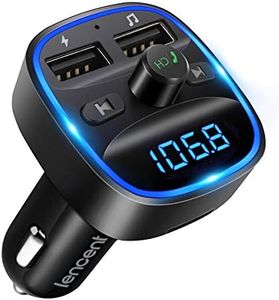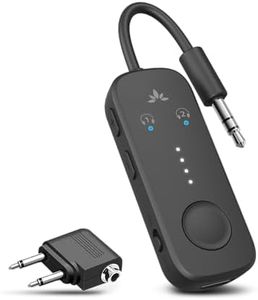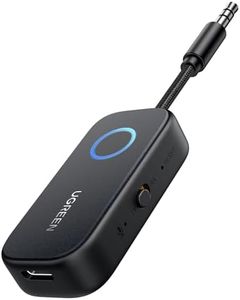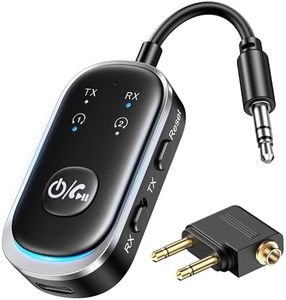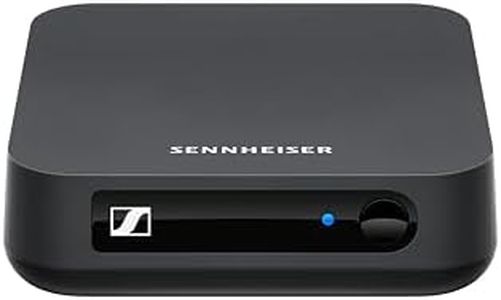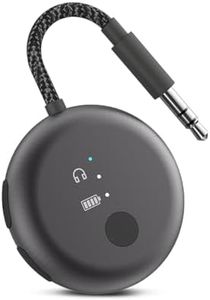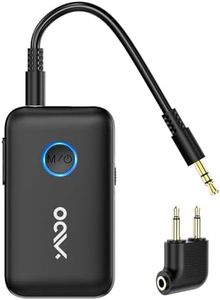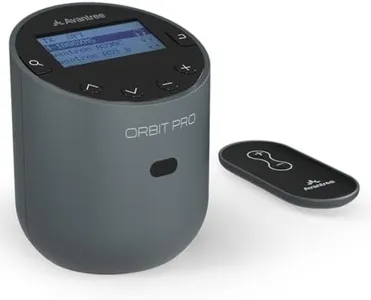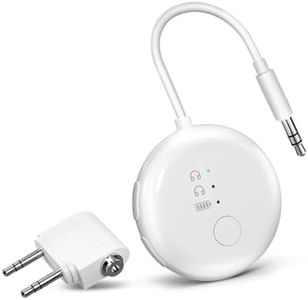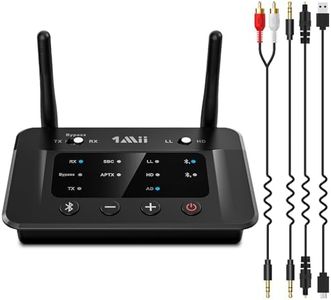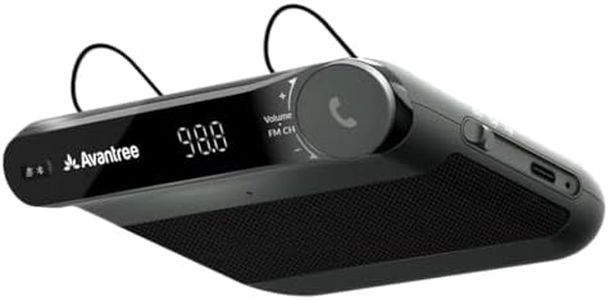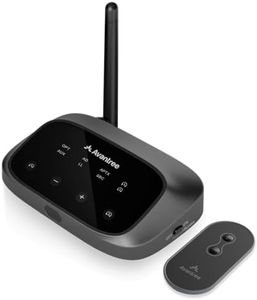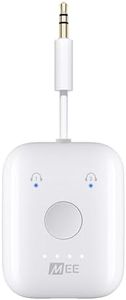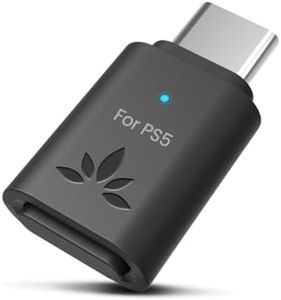We Use CookiesWe use cookies to enhance the security, performance,
functionality and for analytical and promotional activities. By continuing to browse this site you
are agreeing to our privacy policy
10 Best Bluetooth Audio Transmitters
From leading brands and best sellers available on the web.Buying Guide for the Best Bluetooth Audio Transmitters
When looking to buy a Bluetooth audio transmitter, it's important to first think about how and where you plan to use it—whether you want to make a TV, computer, or older audio device wireless, or maybe you want to share audio with wireless headphones or speakers. Understanding how transmitters work and which features matter will help you pick a product that seamlessly integrates into your setup and delivers the wireless convenience you're after.Bluetooth VersionThe Bluetooth version tells you how new the wireless technology in the transmitter is. Newer versions, like Bluetooth 5.0 and above, tend to offer better range, faster and more stable connections, and lower latency (less delay between audio and picture). Older versions can still work, but might have limited range and slightly more lag. If you plan to watch TV or play games, newer Bluetooth versions can help keep audio and video in sync. For music listening, almost any version will work, but newer is usually better for overall experience.
Audio Codec SupportAudio codecs control how the sound is compressed and sent over Bluetooth. Common codecs include SBC (basic), AAC (good for Apple devices), aptX, aptX Low Latency, and LDAC. Some codecs like 'aptX LL' are designed to reduce delay, minimizing lip-sync issues, which is important if you’re watching videos or playing games. If your headphones or speaker support a certain codec, picking a transmitter that matches can make the sound quality better and delay shorter. For general music listening, codec is less important, but for movies and games, look for low-latency options.
Connection InputsInputs are the ways you can connect the transmitter to your audio source. Common types are 3.5mm AUX, RCA, optical (TOSLINK), and USB. Choosing the right one depends on your device: TVs often use optical or RCA outputs, computers may use AUX or USB, and older stereo systems might only have RCA. Think about what ports your source device has, and pick a transmitter that matches, or comes with adapters for flexibility. This ensures you can actually hook up the transmitter without extra purchases.
RangeRange refers to how far the Bluetooth signal can travel from the transmitter to headphones or speakers before it starts cutting out. Typical ranges for Bluetooth audio are 10 to 30 meters, with newer versions offering more distance. If you’re planning to stay close to your device (like watching TV), almost any range will do. But if you want to move around your house or yard, look for a transmitter with a longer range to avoid dropouts.
Multipoint (Dual Link) SupportDual link or multipoint means the transmitter can send audio to two pairs of headphones or speakers at once. This is great if you want to share a movie or music with a friend, both on wireless devices. Not all transmitters offer this feature, so if sharing audio is important to you, make sure to look for it. For solo use, this spec isn’t necessary, but for couples or families, it can be a major benefit.
Power SourceSome transmitters have built-in batteries, while others need to be plugged into power via USB or a wall adapter. Battery-powered ones are good for portable use—on a plane, or in places without easy power access. Plug-in models are best for setups where the transmitter will stay put, like a home TV. Think about where you’ll use it most often to decide which type suits you.
LatencyLatency is the delay between the sound leaving your source and reaching your headphones or speakers. High latency means you might see lips moving out of sync with dialogue when watching TV. Some transmitters are designed for low latency, usually by supporting specific codecs like aptX Low Latency. If you’re mainly using your transmitter for music, latency doesn’t matter much. But for TV, movies, or gaming, look for transmitters that advertise low-latency performance.
